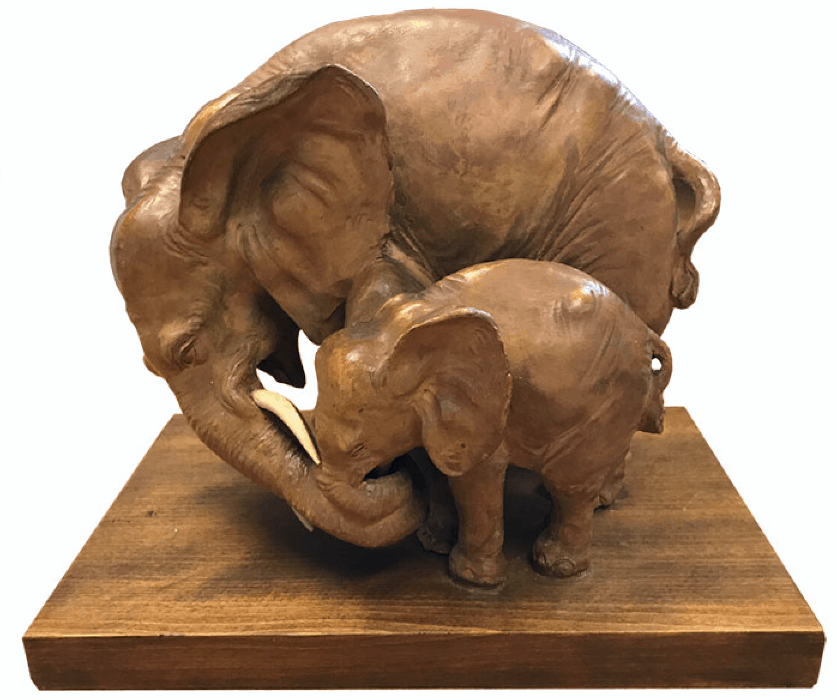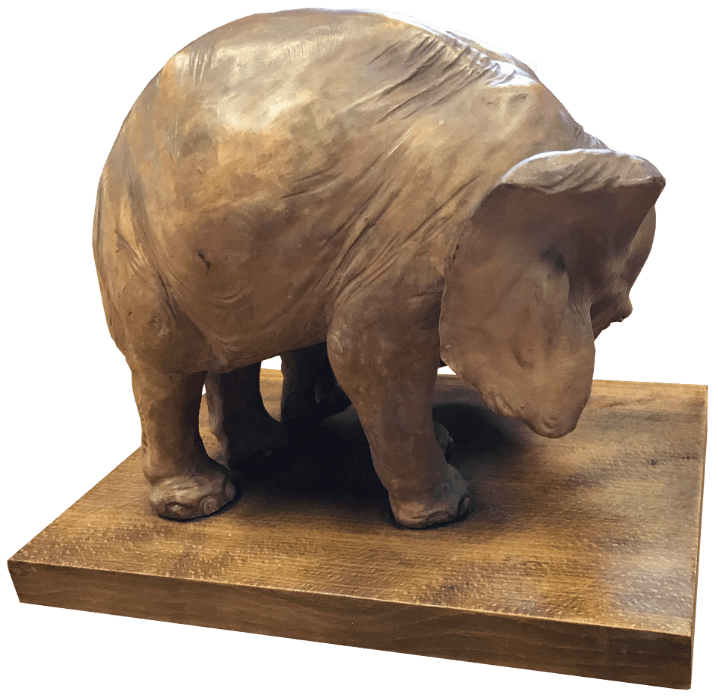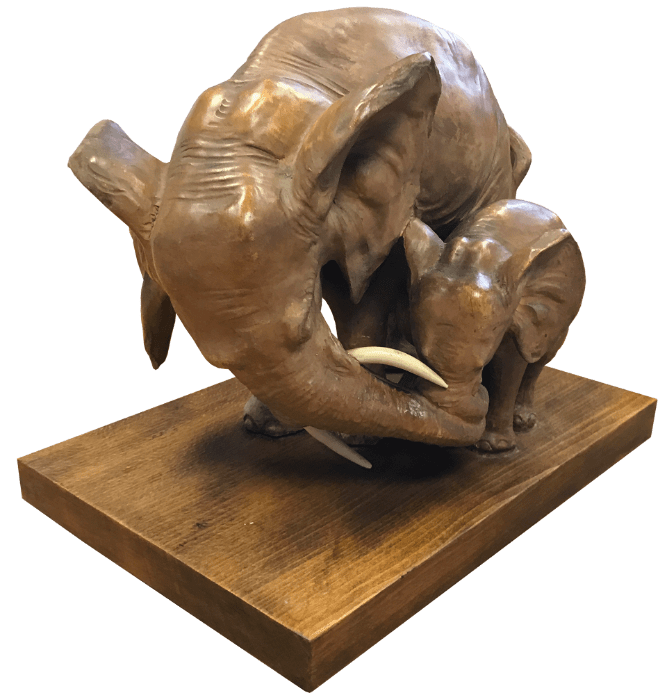Alongside our work restoring traditional easel paintings, we regularly repair and treat ceramic items. Whether a statue has been snapped or a plate has smashed into many pieces, our specialist conservators can take a look and provide our recommendations and advice.

This is just what happened when we received an enquiry through for a unique item; a clay African elephant statue. The elephant had been in a busy office and was accidentally damaged when paintings were being moved. Luckily the paintings were unscathed but the clay elephant took the brunt of the damage.
The Restoration
The statue depicts a mother and baby elephant side by side, with the mother’s trunk wrapped around her close offspring. All of the feet, and part of the legs, of both elephants had been snapped off on impact. The right tusk of the mother had also been torn off. The client gathered as many pieces of the feet as possible, and we collected and packaged the damaged remnants and the elephant at their convenience.

Once the statue arrived in the studio, our specialist conservator was able to advise on the repair. The statue was first cleaned to remove any dirt and contaminants, particularly around the damaged areas. It is important to ensure that the item and any broken parts are clean so that when they are rejoined, it will be a seamless finish and not contain any contaminants in the join. Due to the elephant being hollow, it was crucial to guarantee that all dirt was removed and not left trapped inside.

The fragments of the elephant that were saved, and mostly intact, could be re-attached to the elephant using a bonding material. Inevitably, there were some parts that were missing and so were subsequently re-moulded to carefully match the statue’s structure, texture and aesthetic style. The missing ivory tusk of the elephant was never found after the accident and so it was replicated using a synthetic material. Once the elephants were intact and standing again, they were secured to a small wooden plinth for further support.

The colours of the elephants are greatly varied across the statue to reflect the realistic natural state of the animals. With precision and care, the tusk, legs and feet were carefully colour matched and in-painted for a discreet and uniform finish. The subtle details of the elephant were also closely considered, in keeping with the artist’s impression. Within a month of collecting the statue, the newly restored elephants were returned. We were very pleased to restore such a unique object, and were delighted to receive a grateful thank you note afterwards from our client.
For further insight into the restoration of ceramics, you can read our advice on how to deal with a breakage, learn more about the ceramic restoration process, or contact us if you would like our recommendations and a quote for your own items.






